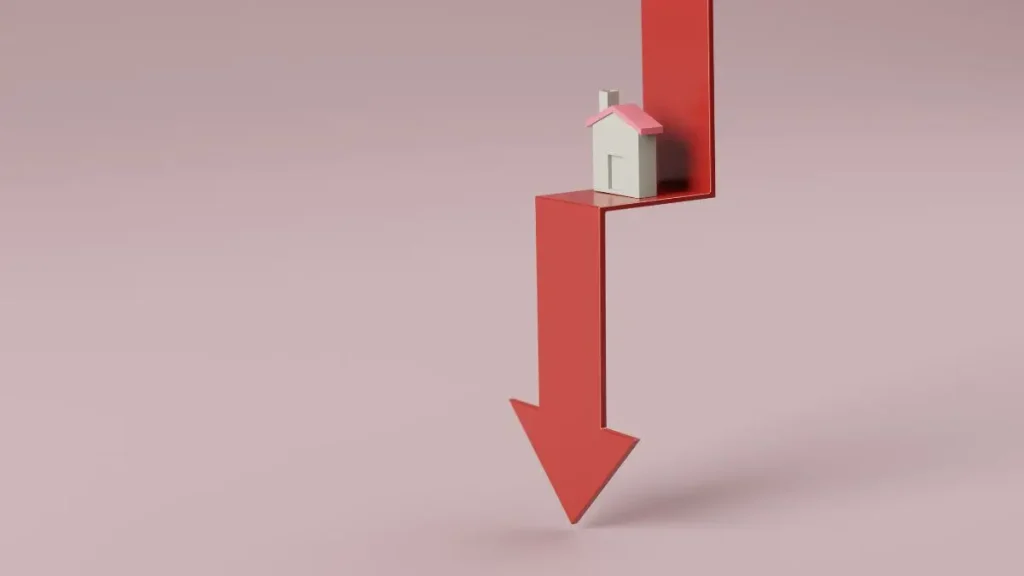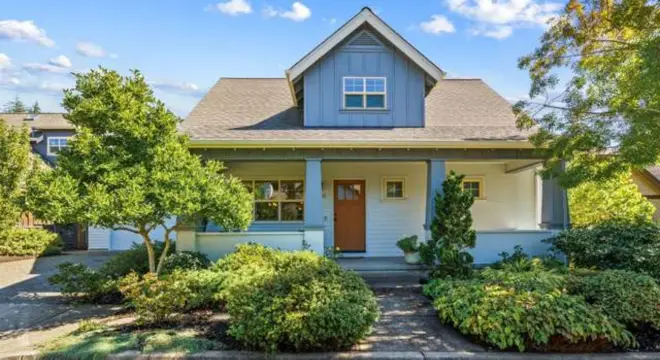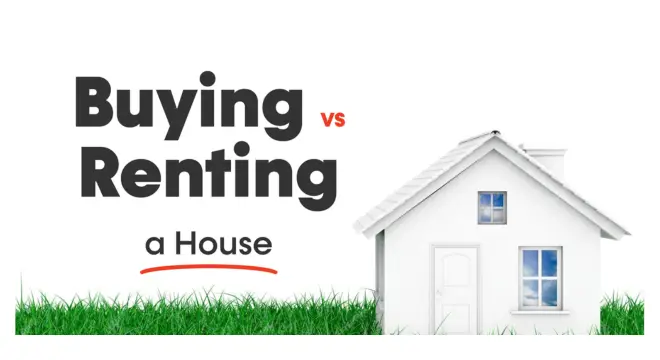30% of Top US Housing Markets See Year-Over-Year Price Drops
If you’ve been watching the real estate headlines lately, you’ve probably noticed a shift. After years of wild price growth, the U.S. housing market is finally losing steam. And it’s not just a blip—it’s showing up in the data.
According to ICE Mortgage Technology, annual home price growth dropped to just 1.3% in June, the slowest it’s been in two years. That’s a major slowdown from even a month earlier, and it’s hitting nearly a third of America’s 100 largest housing markets. Some cities are now seeing prices fall by more than 1% year-over-year, which hasn’t happened on this scale in a long time.
Now, this doesn’t mean we’re heading for a crash. But it does mean something’s changed. A combination of overpriced homes, high mortgage rates, rising inventory, and cautious buyers is reshaping the landscape. And if you’re planning to buy, sell, or just understand where things are headed, this shift matters.
So in this article, I’ll break down exactly what’s happening—where prices are falling, what’s driving the shift, and what it means for people like you and me who actually live in this market. I’ll also show you what most headlines aren’t saying: the emotional toll this is taking on everyday homeowners and buyers who feel stuck in the middle.
Let’s Look at the Numbers: What’s Actually Happening?
If you’re trying to make sense of the headlines, here’s the bottom line: the data is loud and clear. The U.S. housing market is slowing down, and it’s not just talk.
According to CNBC, home price growth in June slipped to just 1.3% year-over-year. That’s down from 1.6% in May—and the lowest we’ve seen in two years. Doesn’t sound like much? In housing terms, that’s a big red flag.
Condo prices have already tipped into negative territory, falling 1.4% nationwide, while single-family homes are barely holding on with 1.6% growth. The cost of borrowing isn’t helping either. With 30-year fixed mortgage rates stuck in the high 6% range, affordability is shot for most first-time buyers. It’s almost double what buyers were locking in just a few years ago.
And what about inventory? It’s up 29% compared to last year. More homes are sitting on the market, but they’re not moving fast. So if you’re wondering why houses feel more “available” now but no one’s jumping—this is exactly why.
Where Are Prices Falling the Most?

This slow creep isn’t happening evenly. In fact, depending on where you live, the market could feel completely different.
VIN News reports that nearly one-third of the top 100 housing markets in the U.S. are now seeing annual price drops of at least 1%. That’s not subtle. And in some areas, it’s way more dramatic.
Take Cape Coral, Florida. Prices there have tanked over 9%, which is the steepest drop nationwide right now. Austin, Texas and Tampa, Florida are also seeing prices slide, and in California? It’s even worse. Seven of the ten biggest markets in the state are trending downward—fast.
But here’s what’s interesting: while the South and West are cooling off, the Midwest and Northeast are still showing strong gains. So if you’re in a city like Boston or Cleveland, you might still be seeing bidding wars while other areas are pulling back.
It really depends on your zip code. And honestly, that makes this market harder to read than ever.
What’s Driving This Shift? The 4-Factor Convergence
Let’s cut through the noise. Here’s what’s really fueling this slowdown. It’s not just one thing—it’s four things hitting all at once:
1. Home Prices Got Way Too High
We all saw it. Pandemic buyers were rushing in, inventory was tight, and sellers were naming their price. That frenzy pushed home values beyond what most people could realistically afford. Now, it’s correcting.
2. Mortgage Rates Doubled
You used to get a 30-year mortgage under 4%. Now, you’re looking at nearly 7%. That difference crushes monthly affordability. A $400,000 home just feels out of reach for a lot of us.
3. Inventory Is Up
There are more homes on the market now—up nearly 30% year-over-year. More choices sound great, but when buyers are nervous and stretched thin, supply alone doesn’t solve the problem.
4. Buyer Fatigue
People are tired of bidding wars, high payments, and uncertain interest rates. Many are choosing to wait, especially with recession talk still floating around.
Bottom line? You’ve got more listings, fewer active buyers, and a ton of financial pressure on both sides. It’s a weird mix—and it’s reshaping the market right now.
While we often focus on new buyers, it’s worth noting that over 30 million homeowners in the U.S. don’t have a mortgage—a stat that’s raising red flags among some economists due to how it’s distorting housing and lending dynamics.
Why Sellers Are Suddenly Hesitating?
Here’s something you won’t see in most headlines: even with more inventory, a lot of homeowners are choosing not to sell.
And I get it. If you bought a house in 2020 or 2021, you probably locked in a sweet 3% mortgage rate. Why would you trade that for 7% just to move? Financially, it doesn’t add up.
Even ICE’s head of housing research, Andy Walden, pointed this out in the CNBC report. He said, “Prices are falling in an increasing number of markets, and homes are taking longer to sell, which could make homeowners reluctant to list.”
In other words, sellers are stuck between wanting to cash out at peak value—but not wanting to re-enter the market as a buyer at today’s costs. That’s why we’re seeing more delistings and fewer fresh listings, especially in places like Phoenix, Denver, and San Jose.
If you’re feeling unsure about selling right now, trust me—you’re not alone.
Have you been considering selling your home but are now unsure? Share your thoughts or questions in the comments—your experience might help someone else!
Who’s Got the Power Right Now—Buyers or Sellers?
Honestly? It depends on where you are.
If you’re buying in places like Florida, Texas, or California, you’ve got leverage. Homes are sitting longer, price cuts are more common, and sellers are finally open to negotiating. In many of those metros, over 30% of listings have already slashed asking prices.
But in the Midwest and Northeast, the story flips. Low supply and steady demand mean sellers still have the upper hand. You might still face competition there, even as the national market cools.
For sellers, this is a moment to get real about pricing. Overpricing in a declining market means your home might just sit… and sit. If you’re serious about selling, strategic pricing is more important now than ever.
And if you’re a buyer? This could be your opening—if you can stomach the mortgage rates. That’s the trade-off we’re all dealing with right now.
Want real-time updates on shifts like these across local markets? Some housing pros and buyers I know are keeping tabs through select WhatsApp real estate updates—they’re seeing helpful tips pop up before major news catches on.
Are We Just Getting Started — Or Is This Temporary?

It’s the question on everyone’s mind: Is this a short-term dip or the start of something bigger?
Right now, the signs point to a slow but widening correction—not a crash. ICE’s data shows that more markets are tipping into negative price territory month after month. And with interest rates staying stubbornly high, this trend isn’t likely to reverse overnight.
At the same time, we’re starting to see a seasonal slowdown, which happens naturally in late summer and fall. So some of this cooling is normal. But the difference this year is the scale. It’s not just a few cities—it’s almost a third of the top 100 markets.
Economists are split. Some say we’ll see a soft landing as rates eventually come down. Others think we’re heading into a longer adjustment, especially in overheated areas where prices shot up 40–50% during the pandemic.
If you’re thinking of buying or selling, it’s important to look at your local trends, not just the national ones. Because while the market is shifting, not everyone’s riding the same wave.
For new buyers—especially students or recent grads—the idea of entering a fluctuating market can feel overwhelming. Here are 7 things no one tells you about buying a home as a student that can help you move forward with confidence.
What Should You Actually Do Right Now?
Let’s cut to the chase. Here’s what this all means for you—whether you’re buying, selling, or sitting tight.
If You’re a Buyer
You finally have breathing room. Less competition, more listings, and price cuts in many markets mean you can negotiate again. But keep in mind—high mortgage rates hurt. If you find a home that fits your budget and lifestyle, it’s still worth considering. Just don’t overextend yourself.
If You’re a Seller
The peak frenzy is over. If you need to sell now, be smart about pricing. Overpricing will cost you time and leverage. Think strategy, not ego. And if you don’t need to sell urgently, it might be worth watching the fall market before jumping in.
If You’re a Renter
Rental markets haven’t cooled as much—but they’re showing early signs. Some cities are seeing slight rent declines, especially where for-sale inventory is growing. If you’re on a lease, now’s the time to negotiate your renewal or shop around.
If You’re an Investor
Watch the Sunbelt. Places like Austin, Tampa, and Phoenix are seeing declines—but long-term fundamentals are still solid. This might be your window to buy in low, if you’ve got the cash and risk tolerance.
No matter who you are, this market rewards patience, research, and honesty with your finances. Don’t chase old highs—and don’t wait forever either.
If you’re serious about buying soon, don’t just hunt for listings—get your paperwork right first. This guide breaks down 16 must-have documents and 6 you should never sign when buying a home.
Why This Matters to the Whole Economy?
This housing shift isn’t happening in a vacuum. It’s deeply tied to the broader economy—and it’s sending signals.
First, real estate drives spending. When people feel confident about their home value, they spend more. When prices fall, that confidence drops. We’ve seen this pattern before in past cycles.
Second, the housing slowdown affects jobs—construction, lending, real estate agents, home services. And we’re already seeing layoffs in mortgage firms and slower activity on new builds.
Moody’s economist Mark Zandi even warned recently that the housing market is becoming a “drag on the U.S. economy.” If this cooling trend spreads further, it could ripple out into everything from consumer spending to GDP growth.
That’s why even if you’re not buying or selling right now, this still impacts your wallet, your job market, and your financial future. Housing isn’t just about homes—it’s about momentum.
Final Thoughts
Let’s be clear: the market isn’t collapsing. This isn’t 2008. Lending rules are tighter, buyer profiles are stronger, and most homeowners have plenty of equity.
But what we are seeing is a reality check.
Buyers are no longer willing to overpay. Sellers can’t just name their price. And mortgage rates aren’t likely to magically fall back to 3% anytime soon.
This correction is healthy—but it’s also uncomfortable. Especially if you’re stuck between needing to move and feeling like the timing is all wrong.
If that’s where you’re at, know this: You’re not alone. A lot of smart, responsible people are in the same boat right now—trying to figure out what makes sense in a market that suddenly stopped playing by the old rules.
Stay grounded. Track your local trends. Talk to real people, not just headlines. And remember—timing the market perfectly is nearly impossible. But making a smart move based on your life, your budget, and your timing? That’s always a win.
Curious about how these market trends impact your home goals? Visit our Real Estate & Homeownership for more smart guides, tools, and updates across the housing and real estate world.
Disclaimer: The insights shared in this article are based on current market data and expert analysis available at the time of writing. Housing trends can shift quickly, and individual situations may vary. Always consult a local real estate professional before making financial decisions.


